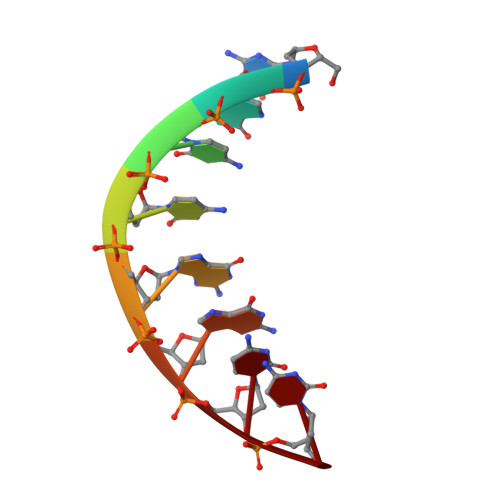Hydration patterns and intermolecular interactions in A-DNA crystal structures. Implications for DNA recognition.
Eisenstein, M., Shakked, Z.(1995) J Mol Biol 248: 662-678
- PubMed: 7752232
- DOI: https://doi.org/10.1006/jmbi.1995.0250
- Primary Citation of Related Structures:
187D, 188D, 189D - PubMed Abstract:
Crystallographic studies of DNA fragments of the A and B conformations have shown that the structure and hydration of the DNA double helix depend both on the base sequence and the environment. Detailed analyses of solvent organization in DNA crystals and its role in intermolecular interactions have been reported mainly for B-DNA structures. We have determined the crystal structures of several isomorphous A-DNA octamers at resolutions from 1.8 to 2.5 A and refined them by the same procedure. Comparative analysis of five independently refined structures in terms of hydration and intermolecular interactions has been performed leading to the following findings. The A-DNA major groove is extensively hydrated and together with the hydration shells of the sugar-phosphate backbone can form an ordered network of fused polygons. The water structure of the phosphate backbone is less conserved than that of the grooves. Characteristic hydration patterns are associated with specific base sequences. The A-DNA minor groove provides sites for intermolecular contacts through hydrophobic and polar interactions. Well-ordered water molecules mediate interduplex interactions that involve either the grooves or the backbone, or both. The direct and water-mediated intermolecular interactions observed in the A-DNA crystal structures are relevant to various recognition motifs between DNA and other molecules. In particular, intermolecular interactions at the DNA minor groove are analogous to those observed in the recently reported crystal structures of complexes between the TATA-binding protein and the TATA-box.
Organizational Affiliation:
Department of Structural Biology, Weizmann Institute of Science, Rehovot, Israel.














